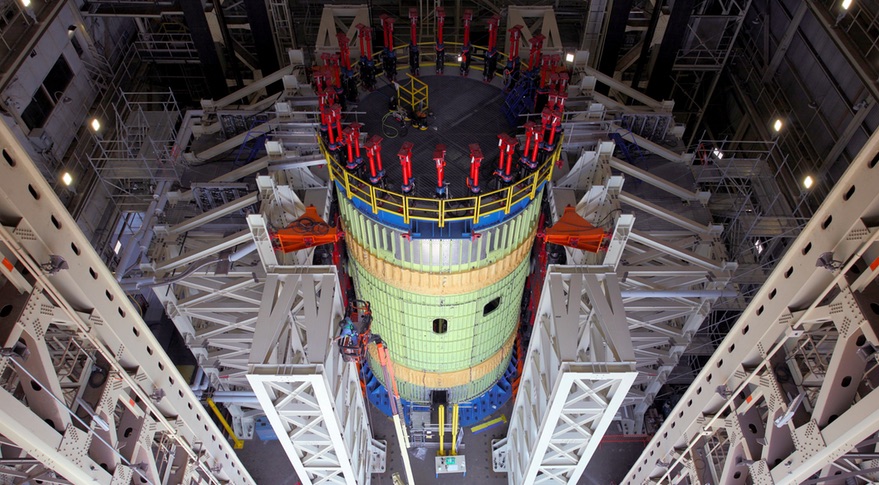So I'm sorry for double-posting so much but this is one of the biggest news weeks for space in recent memory. A lot of huge stuff went down this week.
First off, the USAF did a down-select for their next generation of launch vehicles. Four companies are thought to have submitted proposals for new rockets: ULA (Vulcan), Blue Origin (New Shephard), Orbital ATK/Northrup (OmegA) and SpaceX (upgraded Falcon or BFR). The Air Force chose only three - ULA, BO and NG - leaving SpaceX out of the mix. People were quite shocked that SpaceX got cut from this competition but it actually makes a lot of sense. SpaceX already has two rockets that can meet all of the requirements of the Air Force. An upgrade to the F9 or further development of the BFR just isn't necessary. Moreover, the Air Force
really cares about having multiple launch vehicle options so it makes sense for them to spread the cash around to companies that have no rockets that meet their requirements (BO and NG) or that are retiring their current stable of rockets (ULA).
It's worth pointing out that ULA will use rocket engines provided by both BO and NG. Also, ULA and NG are separately buying the same engines from Aerojet Rocketdyne. It all gos to show how incestuous this industry is.
https://spacenews.com/air-force-fun...ds-to-buy-launch-services-from-two-providers/
---------
The Hubble Space Telescope (HST) suffered a failure in one of its gyroscopes and a second gyroscope is acting up as well. This means the telescope won't be able to do as much science or as high of a quality of science. Unfortunately, there are currently no vehicles which can service the telescope so it may go into a downward spiral and cease functioning altogether. There are some vehicles on the horizon that could potentially service the HST, namely the BFR. Boeing's StarLiner and SpaceX's Crew Dragon may also concievably service HST but this would be a stretch. There are some robotic vehicles on the horizon which may also service the HST or could even boost it into an orbit that would bring it close to the ISS for capture and servicing.
During the last HST servicing mission, NASA attached a set of grappling points for just such an eventuality so maybe the HST can be saved with some planning and lots of funding. I think it would be worth every dollar spent to save, to be honest. There are something like 15,000 scientific papers that were published using HST data.
Scott Manley has a great video on this subject.
The Chandra X-Ray telescope also went into safe mode this week but from the little I've read on it is seems as if this was essentially a routine response to radiation and the vehicle quickly recovered.
---------
NASA's inspector general shredded Boeing for mismanagement of the SLS program. It also blamed NASA itself for failing to deal with Boeing's poor performance. The program has suffered a 100% cost increase and is at least 2 years behind schedule (depending on when you count as the start of the SLS program).
The program is so behind that NASA essentially psuedo-cancelled the upgraded second stage of the SLS as their won't be a core stage to accept this upgraded second stage when it would be ready. They are taking this delay to rethink the entire stage and potentially upgrade it even further as the current design of the upgraded second stage will still be dramatically under-powered for a rocket this size. This may mean we'll eventually get an SLS which can truly replicate the capabilities of the Saturn V but I think it more likely that this stage will be cancelled (along with the entire SLS) when BFR and New Glenn start flying.
Each SLS rocket currently has a 53 month lead time and a price tag of several billion dollars. For reference, Falcon Heavy has about a one year lead time at this point (and improving) and a $100m price tag for 2/3 the capability of the SLS. NG will likely have a price in the same ball park with 5/6 the capability of the SLS.
NASA needs to cancel this program but won't because congress won't let the given how much money this dumps into Alabama, Texas and Florida.
https://spacenews.com/nasa-inspector-general-sharply-criticizes-sls-core-stage-development/
----------
China and India have also re-affirmed their committment to manned space flight. India's government announced their intention to have ISRO begin flying astronauts in the next couple of years and China is finishing ground testing for their next-generation crew capsule and heavy-lift rocket. Additionally, in a month's time China will launch the first lander to the dark side of the moon.
Also, coincidentally, the Chinese are developing their own Hubble Space Telescope and plan to co-orbit it with their upcoming space station which will make servicing it relatively easy.



